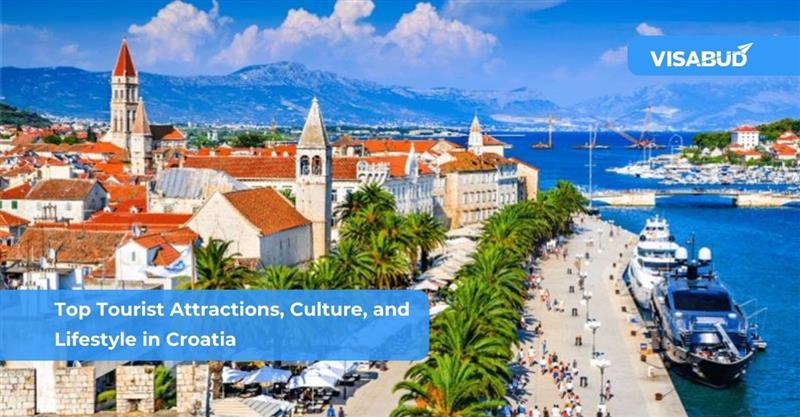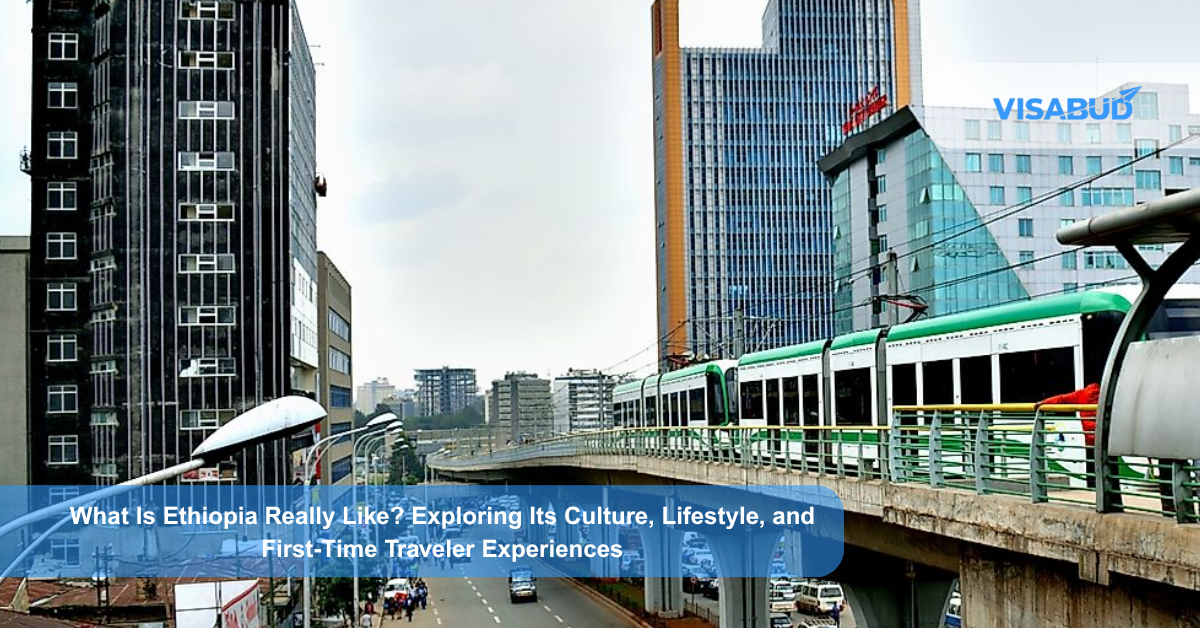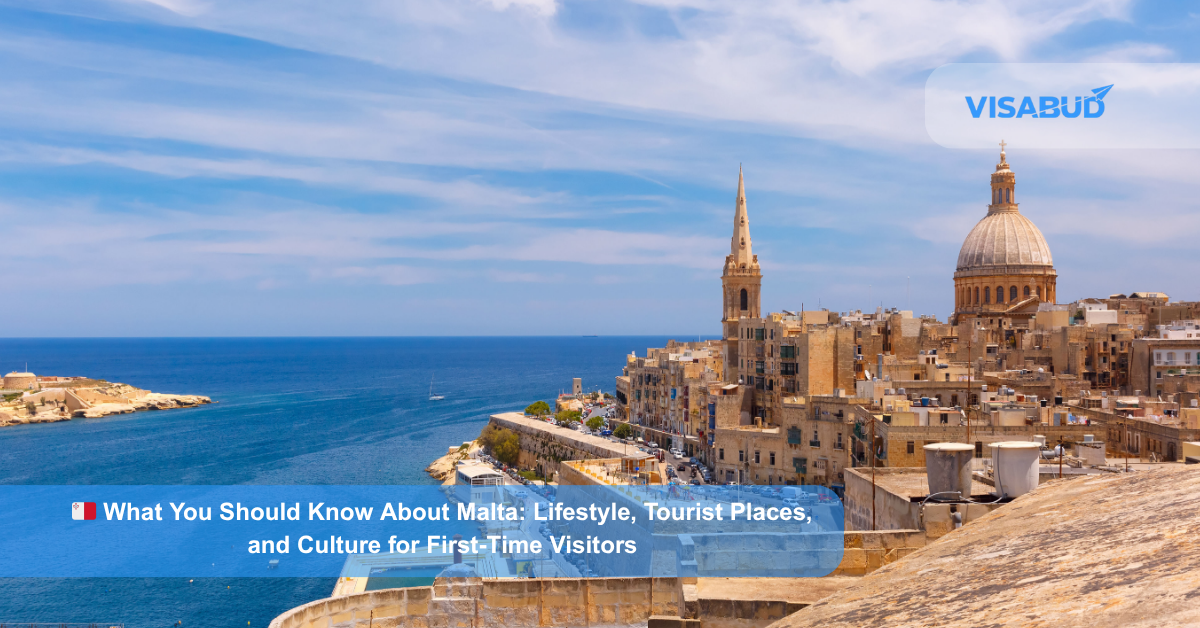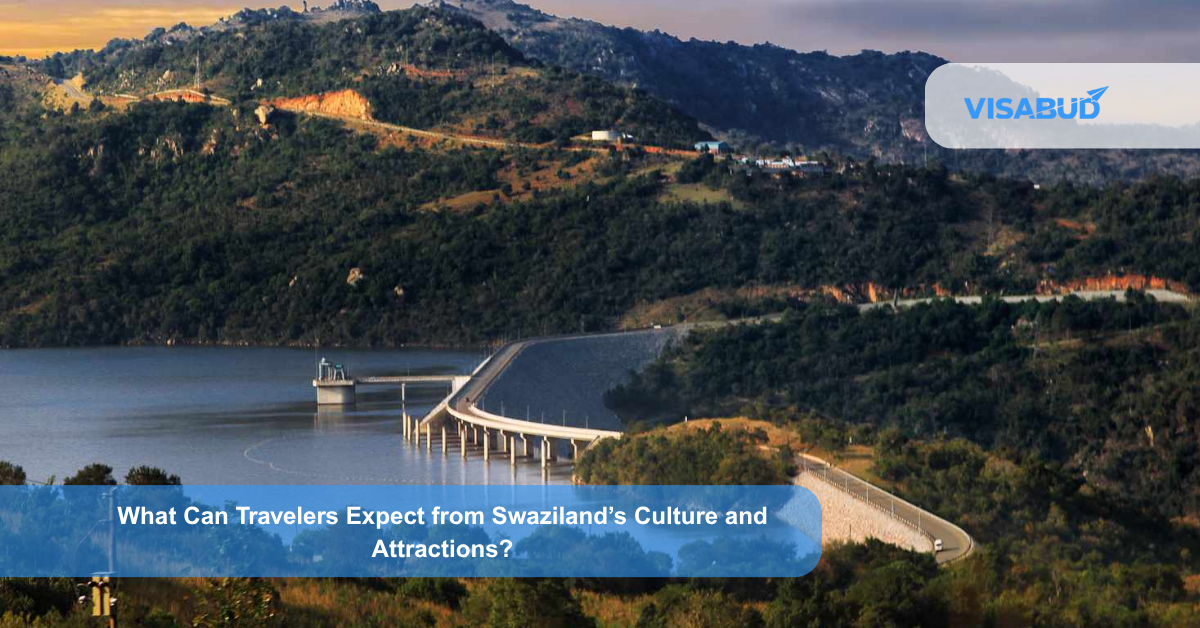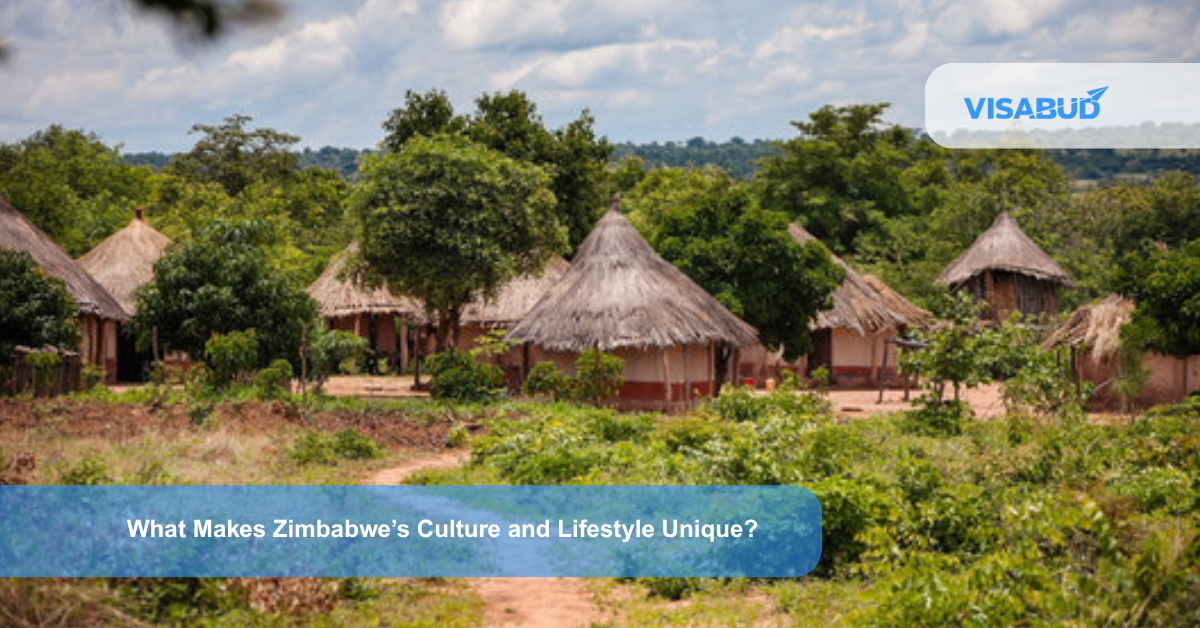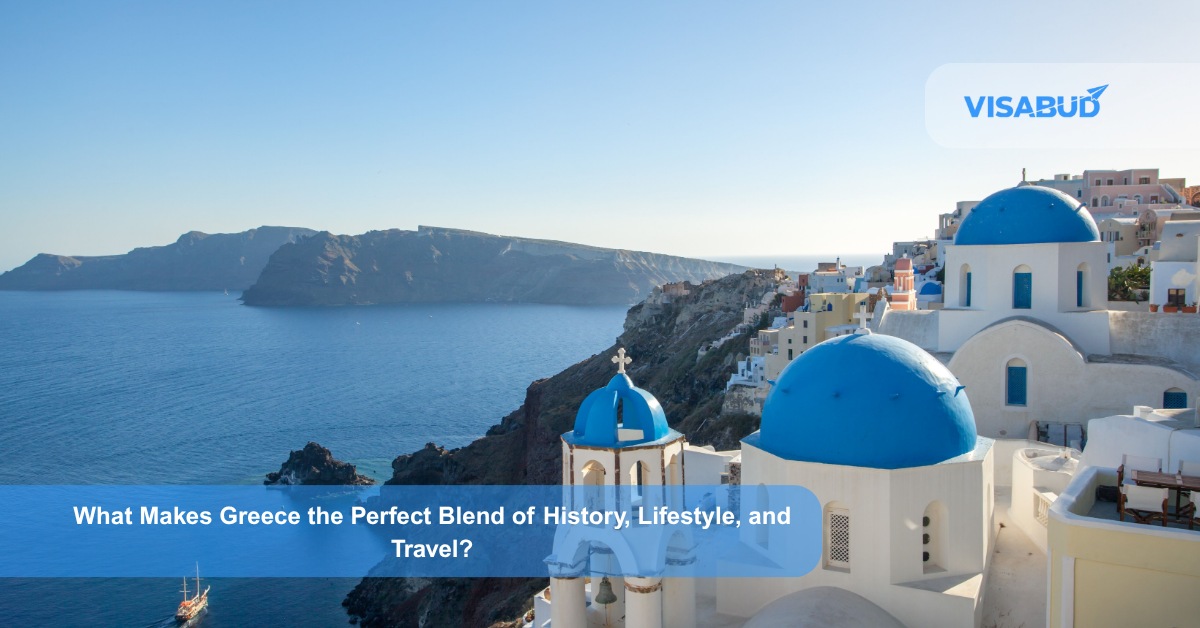When you think of Croatia, it’s hard not to picture sun-kissed beaches, ancient cities steeped in history, and lively street cafes where the atmosphere is as warm as the Mediterranean climate. Located in Southeast Europe along the stunning Adriatic coast, Croatia has earned its place as one of the world’s most coveted travel destinations. With its breathtaking landscapes, rich historical heritage, and vibrant cultural scene, Croatia has something to offer every type of traveler. Whether you’re a history enthusiast, a nature lover, or someone in search of a harmonious blend of traditional charm and modern living, this beautiful country never fails to impress.
Croatia’s cities and islands tell stories of centuries past, from the Roman ruins of Diocletian’s Palace in Split to the medieval walls of Dubrovnik, each site brimming with character and history. Its coastal regions, such as Dubrovnik, Split, and Zadar, are perfect for those looking to relax by the sea or explore charming streets lined with ancient buildings. But Croatia offers more than just picturesque beaches—it boasts pristine national parks like Plitvice Lakes and Krka, where turquoise waters and lush forests create an idyllic environment for outdoor adventures.
In addition to its incredible tourist attractions, Croatia’s lifestyle is a blend of traditional Mediterranean rhythms and modern European influences. The food culture, with fresh seafood, local wines, and Mediterranean flavors, is as diverse as the country’s landscapes. The locals’ relaxed pace of life, coupled with a strong sense of community, creates a welcoming atmosphere for both residents and visitors.
To make your journey to Croatia even easier, VisaBud, a platform designed to simplify the visa process, ensures that all your travel documentation is sorted effortlessly. With access through your smartphone, laptop, or computer, VisaBud helps streamline your planning and removes the stress from the visa process.
Top Tourist Attractions, Culture, and Lifestyle in Croatia
1. Dubrovnik: The Pearl of the Adriatic
Dubrovnik is one of Croatia’s most iconic cities, often referred to as the “Pearl of the Adriatic.” This UNESCO World Heritage site is known for its massive medieval walls, historic streets, and stunning views of the Adriatic Sea. Key highlights include:
2. Plitvice Lakes National Park
This UNESCO-listed park is a must-visit for nature enthusiasts. It features 16 cascading lakes, connected by waterfalls, surrounded by lush forests. Visitors can explore wooden pathways that offer up-close views of the crystal-clear waters.
3. Split: A Living Roman Palace
Split is home to Diocletian’s Palace, one of the best-preserved Roman monuments. The palace is now part of the city’s everyday life, with shops, cafes, and homes nestled within its ancient walls. Split also offers beautiful beaches and a vibrant nightlife scene.
4. Hvar Island
Known as the sunniest place in Croatia, Hvar Island is a favorite among tourists for its natural beauty and lively atmosphere. The island is famous for:
5. Rovinj
A charming coastal town on the Istrian Peninsula, Rovinj is known for its colorful buildings, narrow alleys, and Venetian influence. The St. Euphemia Church offers panoramic views from its bell tower, and the town has a vibrant arts scene with local galleries and studios.
6. Zagreb: Croatia’s Capital
Zagreb combines old-world charm with a modern lifestyle. Notable attractions include:
7. Zadar
Zadar is known for its innovative public art installations, like the Sea Organ, which is played by the movement of waves, and the Sun Salutation, a solar-powered light display. The city also offers Roman ruins, medieval churches, and a lively waterfront.
2. Culture of Croatia
Croatia’s culture is a rich blend of influences from various civilizations that have shaped the country throughout its history, including Roman, Venetian, Ottoman, and Austro-Hungarian rule. This eclectic heritage is reflected in Croatia’s art, traditions, music, festivals, and daily life, making it a country where the past and present come together to create a unique cultural identity.
Traditional Music and Dance
Music and dance are central to Croatian culture, with many traditional forms celebrated throughout the country:
Festivals and Celebrations
Croatians are known for their love of festivals and public celebrations, which highlight the country’s deep cultural roots:
Culinary Delights
Croatian cuisine is a reflection of its regional diversity, with each area of the country offering distinct flavors and traditional dishes:
Famous Croatian dishes include:
Arts and Crafts
Croatia has a long-standing tradition of arts and crafts, with several UNESCO-listed practices that have been passed down through generations:
Croatia’s culture is an ever-evolving mix of historical traditions, modern influences, and vibrant local customs. Whether it’s enjoying a traditional festival, tasting regional delicacies, or admiring handcrafted lace, visitors to Croatia will find a country that celebrates its past while embracing its future.
3. Lifestyle in Croatia
Easygoing and Outdoor Living
Life in Croatia moves at a relaxed, enjoyable pace. Croatians deeply value spending time outdoors, whether it’s strolling along seaside promenades, enjoying parks, or gathering at bustling town squares. Outdoor markets, music festivals, and cultural fairs are common throughout the year, reflecting the community’s love for fresh air and social activities. Thanks to Croatia’s pleasant Mediterranean climate, open-air living is part of daily life, whether people are dining at seaside restaurants or attending family picnics in lush countryside settings.
Café Culture: More Than Just Coffee
In Croatia, coffee isn’t just a drink—it’s a way of life. Locals often spend hours in cafes, savoring a single cup while engaged in long conversations. This café culture is deeply ingrained in cities like Zagreb, Split, and Dubrovnik, where picturesque sidewalk cafes line historic streets. Meeting for coffee is a daily ritual among friends, colleagues, and even business partners. It’s less about the caffeine and more about connecting, relaxing, and appreciating the moment.
Work-Life Balance
Croatians enjoy a healthier work-life balance compared to many Western nations. Extended lunch breaks, generous vacation time, and frequent national holidays are common parts of the work culture. The emphasis is on enjoying life, not just working to live. Many businesses, especially in smaller towns, close for a few hours during midday, allowing workers to enjoy a proper meal with family or friends. Summers often see an unofficial “slowdown” as many locals head to the coast for extended vacations, further highlighting the country’s prioritization of personal well-being over constant hustle.
Safety and Strong Community Bonds
One of Croatia’s greatest advantages is its safety. It is consistently ranked as one of Europe’s safest countries for both residents and visitors. Whether walking home late at night or leaving personal items at a café table, people generally feel secure. Community spirit remains strong, especially in smaller towns and on the islands. Neighbors know each other well, and it’s common to see multigenerational families gathering for Sunday lunches or festivals. Children play freely in parks, and there’s a shared sense of responsibility for communal well-being.
Affordability and Cost of Living
Compared to much of Western Europe, Croatia offers a reasonably affordable cost of living. While top tourist destinations like Dubrovnik and Hvar can be expensive during peak season, smaller towns and inland areas remain quite budget-friendly. Daily expenses such as groceries, dining out, and transportation are generally lower than in nearby countries like Italy or Austria. Renting apartments, especially outside of major tourist cities, is also affordable, making Croatia attractive not just for tourists, but also for digital nomads and expatriates looking for a charming place to settle.
4. Best Times to Visit Croatia
Summer (June to August)
Summer is the peak tourist season in Croatia, attracting travelers from all over the world. With long sunny days, warm temperatures, and the shimmering Adriatic Sea, it’s the perfect time for beach lovers and festival-goers. Popular coastal cities like Dubrovnik, Split, and Zadar buzz with energy, offering outdoor concerts, lively street performances, and colorful festivals. Islands such as Hvar and Korčula are packed with visitors enjoying boat trips, parties, and water sports. However, if you choose to visit during summer, be prepared for bigger crowds, higher prices, and the need to book accommodation well in advance. Despite this, the lively atmosphere and beautiful beach days make it a truly memorable experience.
Spring (April to May)
Spring is one of the most pleasant and underrated seasons to explore Croatia. The weather is comfortably warm without the intense heat of summer, and the landscapes are lush and blooming. This is the ideal time to visit Croatia’s beautiful national parks like Plitvice Lakes and Krka, where the waterfalls are at their fullest. The crowds are significantly smaller, allowing you to enjoy the sights at your own pace. Spring is also perfect for outdoor adventures such as hiking, cycling, and exploring the Istrian countryside. In addition, the islands begin to show off their famous lavender fields, offering spectacular colors and fragrances with fewer tourists around.
Autumn (September to October)
Autumn brings another fantastic opportunity to visit Croatia. The weather remains warm through September, and by October, it cools down slightly but remains comfortable. The sea is still pleasant for swimming, and the main tourist crowds have faded away. This makes autumn ideal for a more relaxed travel experience, whether you’re strolling through the streets of Dubrovnik or wine-tasting in the rolling hills of Istria. Fall also marks the harvest season, meaning you can savor fresh truffles, figs, grapes, and participate in traditional wine festivals across the country. The landscapes are breathtaking, with rich autumn colors blanketing the countryside.
Winter (November to March)
Winter in Croatia is peaceful and offers a completely different vibe compared to the bustling summer months. Coastal cities like Split and Dubrovnik enjoy milder winters, perfect for exploring historic sites without the crowds. In inland areas like Zagreb and Slavonia, you can experience colder temperatures and occasional snow. The festive season in Croatia is especially magical, with Zagreb’s Christmas Market—one of the best in Europe—transforming the city into a winter wonderland. Accommodation prices drop significantly, making it an excellent time for budget travelers. Winter is perfect for those seeking a quieter, more authentic Croatian experience filled with local traditions and cozy cafes.
5. Sustainable Tourism in Croatia: Preserving Beauty for Future Generations
Croatia is deeply committed to promoting sustainable tourism practices, ensuring that its breathtaking landscapes, rich cultural heritage, and vibrant communities remain intact for generations to come. Travelers can play a key role in supporting these efforts by embracing responsible tourism while enjoying everything Croatia has to offer.
Eco-Friendly Accommodations
One of the easiest ways travelers can contribute to sustainable tourism is by choosing eco-friendly accommodations. Across Croatia, there has been significant growth in green hotels, eco-resorts, and sustainable hostels. These establishments prioritize environmentally responsible practices such as using renewable energy sources, installing water-saving systems, reducing plastic usage, and serving organic, locally-sourced food.
By staying in eco-conscious accommodations, visitors not only minimize their environmental impact but also experience a more authentic, intimate connection with Croatia’s local culture and traditions. Many of these eco-lodgings are located in natural settings, offering guests a serene and immersive experience close to nature.
Nature Conservation and Eco-Tourism
Croatia’s natural treasures—such as Plitvice Lakes National Park, Krka National Park, and Mljet National Park—are vital parts of the country’s identity. To protect these environments, strict conservation measures have been implemented. Visitors are expected to:
Eco-tourism options are abundant for those who want to explore responsibly. From kayaking trips that use eco-friendly equipment to electric boat tours and hiking expeditions led by certified local guides, there are plenty of opportunities to experience Croatia’s beauty without leaving a negative footprint.
Support for Local Communities
Supporting local communities is a crucial aspect of sustainable tourism in Croatia. Travelers are encouraged to shop at farmers’ markets, dine in family-run restaurants, and buy handmade crafts from local artisans. This approach helps sustain traditional industries and crafts, such as lavender farming in Hvar, truffle hunting in Istria, and winemaking along the Dalmatian coast.
Opting for local products over mass-produced goods reduces the environmental impact associated with large-scale manufacturing and long-haul shipping. It also provides visitors with a richer, more meaningful travel experience by allowing them to connect directly with Croatia’s culture and traditions.
Additionally, participating in cultural events, traditional festivals, and community-run tours not only enriches the travel experience but also contributes to preserving Croatia’s intangible heritage.
6. Croatia Visa Information and How VisaBud Can Help
If you’re planning to visit Croatia, understanding the visa requirements is an essential part of your travel preparations. While Croatia is a member of the European Union, it is not yet a full member of the Schengen Area. However, due to agreements with the Schengen Zone, travelers holding a valid Schengen visa can enter Croatia without needing a separate Croatian visa, making the process more straightforward for many international visitors.
Depending on your nationality and the purpose of your visit, you may need to apply for a Croatian visa. Here’s a breakdown of the main types of visas you might need:
1. Tourist Visa
This visa is perfect for travelers who wish to visit Croatia for leisure activities such as sightseeing, family visits, or attending cultural events. The Croatian tourist visa generally allows a stay of up to 90 days within a 180-day period. It’s ideal for short vacations or brief visits to experience Croatia’s stunning landscapes, historic cities, and rich culture.
2. Business Visa
If you’re heading to Croatia for professional reasons—such as attending meetings, conferences, or exploring business opportunities—you will need a business visa. Similar to the tourist visa, it typically permits a stay of up to 90 days. Having proper documentation from your employer or the business partner in Croatia is crucial for this application.
3. Student Visa
Students who have been accepted into Croatian educational institutions need to apply for a student visa. This visa is typically issued for the duration of your academic program and requires proof of enrollment, financial means, accommodation details, and health insurance coverage.
4. Work Visa
Individuals seeking employment opportunities in Croatia must secure a work visa. Usually, this process starts with a Croatian employer providing a formal job offer, after which the applicant can proceed with the work visa application. This visa is generally tied to the duration of the employment contract.
7. Expat Life in Croatia
Living in Croatia offers a captivating blend of historical beauty, modern convenience, and a laid-back lifestyle that many expats find appealing. Whether you are relocating for work, retirement, or a new adventure, Croatia provides an enriching environment with a strong sense of community, a vibrant culture, and access to stunning landscapes.
Affordable Cost of Living
Compared to many Western European countries, Croatia offers a much lower cost of living. Cities like Zagreb, Split, and Rijeka present affordable options for housing, food, and everyday expenses. While tourist hotspots like Dubrovnik can be more expensive, inland towns and smaller coastal areas remain very budget-friendly. Monthly rental prices, even in the cities, are generally more affordable than in places like Paris, Rome, or London. Groceries, transportation, and healthcare also come at a lower price point, allowing residents to enjoy a high quality of life without breaking the bank.
Work Opportunities for Expats
Croatia’s economy, while traditionally driven by tourism, is diversifying. Growing industries include information technology, healthcare, education, and digital services. Expats can find opportunities in sectors like hospitality, customer support, and language teaching. Digital nomads and freelancers are increasingly choosing Croatia, especially with the introduction of the Croatia Digital Nomad Visa, which allows remote workers to stay legally while enjoying the country’s beautiful environment. Major cities such as Zagreb and Split have numerous coworking spaces and strong internet infrastructure, making it convenient for professionals who work online.
Language and Integration
While English is widely spoken, especially among the younger population and in tourist areas, learning Croatian can significantly enhance your living experience. Understanding the local language can help you form deeper connections, navigate bureaucracy, and integrate more easily into the community. Croatians are known for being warm and welcoming toward foreigners. Many expats find themselves quickly absorbed into local traditions, enjoying festivals, cultural events, and neighborhood gatherings. In smaller towns, speaking Croatian becomes even more important, as English proficiency may be limited.
Healthcare Services
Croatia offers a high standard of healthcare. Residents, including expats who obtain legal residency, are entitled to public healthcare services at affordable rates. The public system covers general care, specialists, and hospital services, while private healthcare facilities are also available for faster access and specialized treatment. Many private doctors and specialists speak English, making communication easy for foreign residents.
Education and Family Life
For expats moving with families, Croatia offers quality education options. Public schools provide free education and are well-regarded, while several international schools operate in cities like Zagreb, offering curriculums in English, German, or French. Family life in Croatia is highly valued, with plenty of parks, playgrounds, and family-friendly events held throughout the year.
8. Cultural Etiquette and Tips for Travelers in Croatia
When visiting Croatia, understanding the local culture and etiquette can make your experience more enjoyable and help you connect better with locals. Here’s a comprehensive guide to Croatian customs and social norms:
Greetings
In Croatia, greetings are an important part of social interaction. A firm handshake accompanied by direct eye contact is the standard form of greeting, particularly in professional or formal situations. Among close friends and family members, it’s common to exchange a light kiss on each cheek, typically starting with the left. This warm gesture reflects the friendly and welcoming nature of Croatians.
Dress Code
Croatians generally place a strong emphasis on personal appearance and style. Even in casual settings, people tend to dress neatly and presentably. When dining out, attending events, or visiting churches and cultural landmarks, it’s appreciated if you dress smartly and modestly. Beachwear, like swimsuits and flip-flops, should be reserved for the beach and not worn in town centers or restaurants. Respecting local dress codes, especially in religious sites, shows cultural awareness and sensitivity.
Dining Etiquette
Dining in Croatia is a social affair, and meals are often enjoyed at a leisurely pace. When eating at a restaurant or someone’s home, it’s polite to wait until everyone is served and the host begins eating before you start. If you are invited to a Croatian home, it’s a kind gesture to bring a small gift such as a bouquet of flowers, a bottle of good wine, or a box of chocolates. Complimenting the meal and showing appreciation to the host is also highly valued. In traditional settings, offering a toast before drinking, often with a cheerful “Živjeli!” (Cheers!), is a part of the dining ritual.
Tipping
While tipping is not obligatory in Croatia, it is a common practice to leave a gratuity for good service. In restaurants, a tip of around 10-15% is typical if you are satisfied with the service. It’s courteous to hand the tip directly to the server rather than leaving it on the table. Additionally, rounding up the fare or giving a small tip to taxi drivers, hotel porters, and tour guides is appreciated and seen as a polite gesture.
Other Social Tips
By respecting local etiquette and showing appreciation for Croatian customs, travelers can enjoy deeper and more meaningful experiences. Small gestures of respect go a long way and often lead to warmer interactions and unforgettable memories.
9. Hidden Gems in Croatia: Discover the Untouched Beauty
While Croatia’s popular destinations like Dubrovnik and Split draw millions of visitors, the country is also home to numerous hidden gems waiting to be explored. These lesser-known spots offer an authentic glimpse into Croatia’s natural beauty, rich culture, and relaxed way of life, far from the usual tourist crowds.
Vis Island: A Secluded Paradise
Vis Island remains one of Croatia’s most untouched and peaceful destinations. Located farther out in the Adriatic Sea, Vis offers stunning beaches, traditional fishing villages, and lush vineyards. It’s famous for the breathtaking Blue Cave on the nearby island of Biševo, where sunlight creates a magical blue glow inside the cave. The island’s relaxed atmosphere, delicious seafood, and unspoiled landscapes make it a perfect escape for those seeking tranquility and authentic Croatian charm.
Kornati National Park: A Sailor’s Dream
The Kornati National Park is a mesmerizing archipelago made up of around 140 islands and islets, known for their stark beauty and crystal-clear waters. This sailing paradise is ideal for nature lovers, divers, and adventurers. The dramatic cliffs, hidden coves, and vibrant marine life offer countless opportunities for exploration. Whether you’re cruising through the islands or hiking the rugged landscapes, the Kornati Islands provide an unforgettable off-the-grid experience in Croatia.
Samobor: A Quaint Town Near Zagreb
Located just 20 kilometers from Croatia’s capital, Samobor is a charming town that feels worlds away from the hustle and bustle. With its picturesque old town square, colorful houses, and cozy cafes, Samobor offers visitors a taste of traditional Croatian life. The town is especially famous for its Samoborska kremšnita, a delectable cream cake that’s beloved across the country. Samobor also serves as a gateway to the surrounding hills and trails, making it a popular spot for day trips and leisurely walks.
Mljet National Park: Nature’s Hidden Treasure
Often referred to as Croatia’s greenest island, Mljet is a serene paradise covered mostly by dense forests. The Mljet National Park occupies the western part of the island and is best known for its two saltwater lakes, Veliko Jezero and Malo Jezero. Visitors can enjoy swimming, kayaking, or cycling around the lakes. In the middle of Veliko Jezero lies a small island with a 12th-century Benedictine monastery, adding a touch of history to this natural sanctuary. Mljet’s peaceful atmosphere and stunning landscapes make it an ideal retreat for nature lovers and adventure seekers.
Final Thoughts: Why You Should Experience Croatia
Croatia is a destination that promises an unforgettable experience for every traveler. With its fascinating mix of historical landmarks, cultural richness, and natural beauty, this country offers something for everyone. From the vibrant city life of Zagreb to the serene, crystal-clear waters of the Adriatic coast, Croatia is a place where ancient history meets modern charm. Whether you’re exploring bustling cities, relaxing on pristine beaches, or discovering hidden gems, each corner of Croatia invites you to explore its unique stories and landscapes.
Croatia also offers an ideal environment for expatriates and digital nomads. Affordable living costs, a growing economy, and a high standard of healthcare and education make it a compelling choice for those looking to work or settle abroad. The welcoming and friendly local culture ensures that newcomers can easily feel at home.
With VisaBud simplifying your visa application process, your journey to Croatia will be easier, allowing you to focus on the adventure ahead. So, whether you are visiting for a short vacation or considering a long-term stay, Croatia’s mix of culture, lifestyle, and tourist attractions is sure to leave a lasting impression.
Don’t wait, plan your trip to Croatia today, and immerse yourself in the beauty, history, and lifestyle that this beautiful country has to offer.
Contact Us for Croatia Travel Assistance
